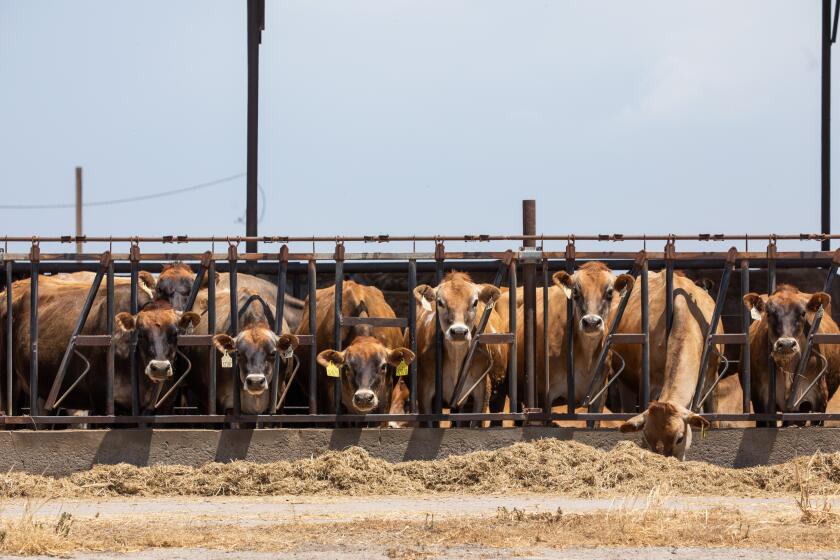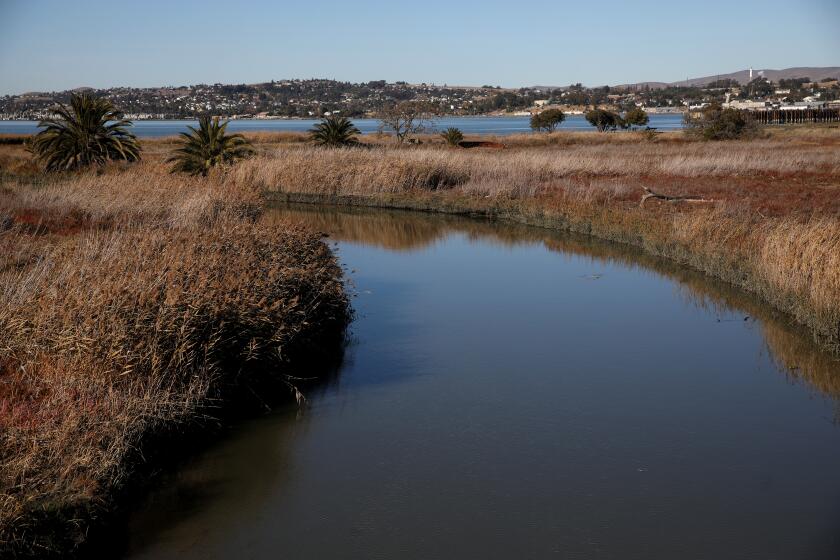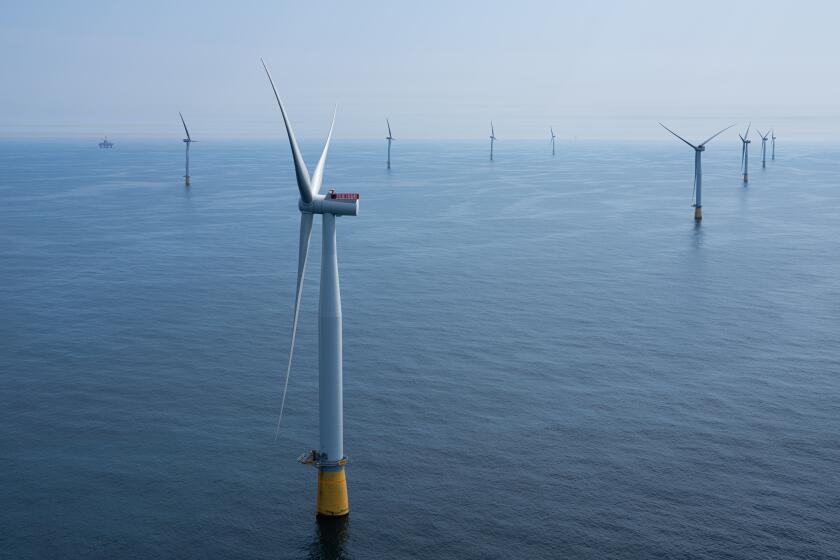Boiling Point: Can changing cows’ diets help California fight global warming?
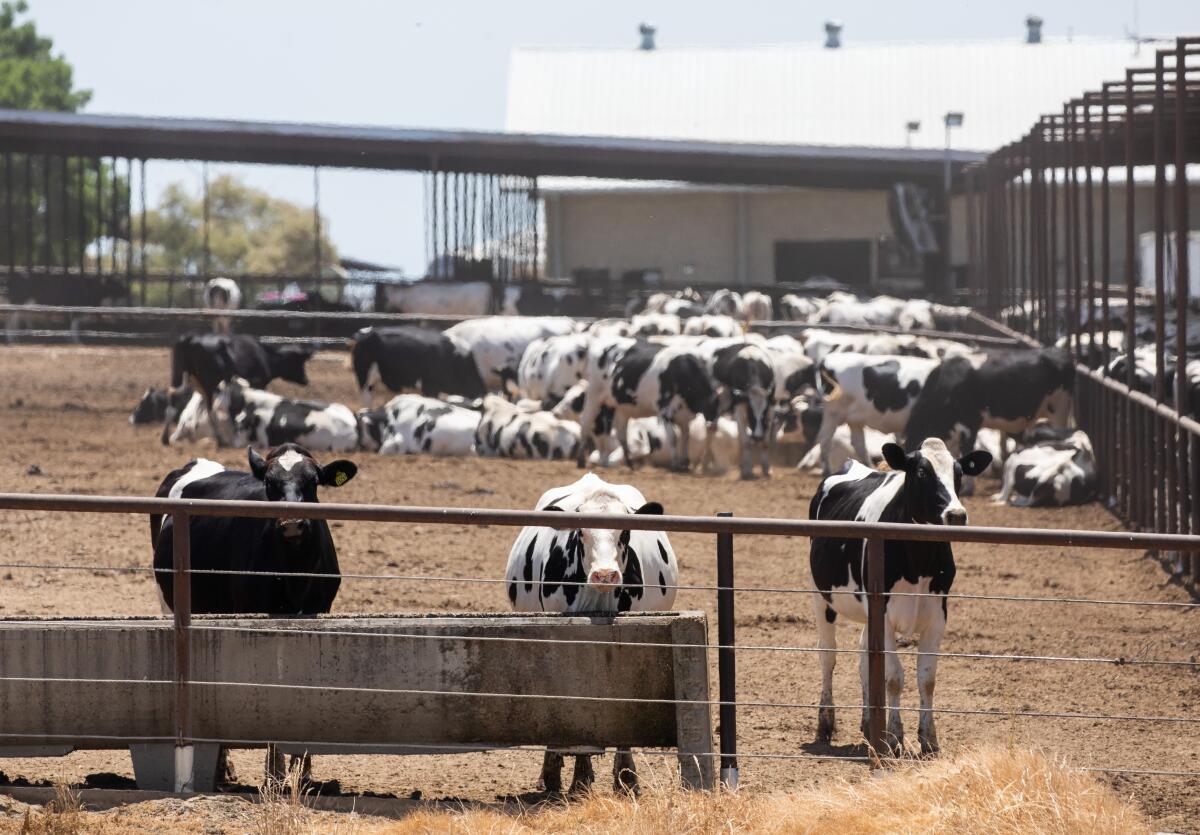
Hi everyone, my name is Tony Briscoe. I’m the Los Angeles Times’ air quality and environmental health reporter. I’m filling in for Sammy Roth in this week’s edition of Boiling Point as he travels to Montana to report the next story in his Repowering the West series. Check here for daily updates.
Chances are, if you watch TV in California, you’ve seen the round-the-clock advertisements promoting the state’s $7.5 billion dairy industry. They feature tantalizing images of butter-glazed grilled corn, gooey grilled cheese sandwiches, sour cream-topped cheese fries and oversized ice cream cones.
Roughly eight in 10 Americans consume dairy in some form. Although the demand for milk has plummeted because people are opting for plant-based alternatives, there has been an overall rise in dairy consumption due to the country’s growing appetite for cheese and butter.
This penchant for dairy products — and I admit, I indulge in my fair share — has serious implications for our climate and air quality.
Over the past several months, I reviewed hundreds of pages worth of state reports and academic studies detailing how millions of tons of cow manure are warming the planet and polluting disadvantaged communities.
You're reading Boiling Point
Sammy Roth gets you up to speed on climate change, energy and the environment. Sign up to get it in your inbox twice a week.
You may occasionally receive promotional content from the Los Angeles Times.
I’ve also made several reporting trips to the Central Valley to see firsthand how California — the nation’s leading dairy state — is trying to reduce planet-warming emissions from its 1.7 million milk cows. This herd belches and excretes tremendous amounts of methane, a greenhouse gas that warms the atmosphere 80 times more than carbon dioxide over a 20-year period.
State agencies have decided the best course of action is to help fund the construction and operation of dairy digesters: covered manure lagoons that trap the methane emanating from cow dung.
The captured methane is used to fuel gas-fired trucks, power electrical generators and feed gas to household appliances.
But environmental groups argue this strategy flies in the face of the state’s climate goals that aim to transition away from burning methane for energy. California air regulators have voted to phase out the sale of new trucks fueled by methane, and several major cities, including L.A., have adopted ordinances to ban the installation of most natural gas appliances in new construction.
As complaints have mounted over how dairy methane is being used in California, the dairy industry questioned why shouldn’t it go toward helping a state that has experienced energy shortages.
“I think that’s the frustrating part for us, with some of the concerns we get about the projects,” said Michael Boccadoro, executive director of Dairy Cares. “If you’re going to capture the methane, you got to have something to do with it. If we were in another state, they might just let us simply flare it to get rid of it. But here in California, you don’t do that.”
However, environmental advocates also point to research that suggests digesters could worsen air quality in the San Joaquin Valley, California’s dairy belt, which already witnesses the nation’s highest levels of lung-aggravating particle pollution each year. They worry this infrastructure will result in mostly Latino farming communities breathing more lung-damaging pollution. Here’s the full story.
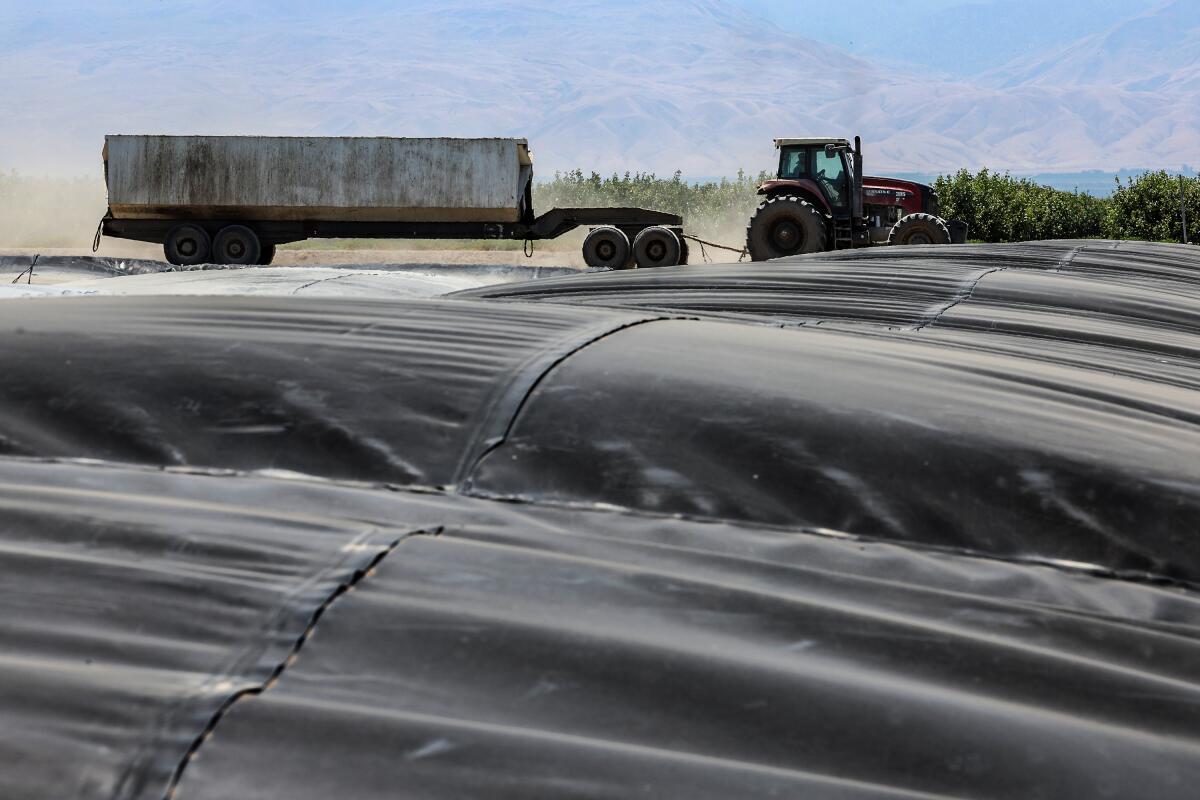
Although state air regulators have commissioned research to study whether digesters could give rise to unexpected pollution, it’s also important to note this technology isn’t a silver bullet.
If California hopes to avoid enough methane from dairy cows and achieve its climate goals, it also needs to curb the amount of gases cows are belching — which is responsible for approximately 20% of the state’s methane.
Cows typically eat hay and byproducts from local crops such as almond hulls. The bacteria in their guts produce methane when it helps breaks down this plant material.
This has motivated a field of research dedicated to discovering what might make cows less gassy.
The dairy industry and agricultural scientists have been testing feed additives, including seaweed and garlic.
California has funneled billions of dollars toward curbing planet-warming gases from cows. Environmental experts say the state’s approach is flawed.
But the leading candidate appears to be a synthetic feed additive, Bovaer, which has been proven to reduce methane by about 30% in European studies. It’s awaiting FDA approval for U.S. clinical trials.
The research sounds promising, but the broader issue with planet-warming gases and pollution lies with the way the dairy industry has evolved over time.
Spanish missionaries brought the first cattle to California in the 1700s. In the following centuries, as settlers moved to the West, the state became a destination for commercial dairy farmers.
Its tremendous land size was ideal for cattle grazing. The state’s temperate climate allowed for cows to be kept outdoors year-round. And the Central Valley grew plenty of crops for high-quality animal feed.
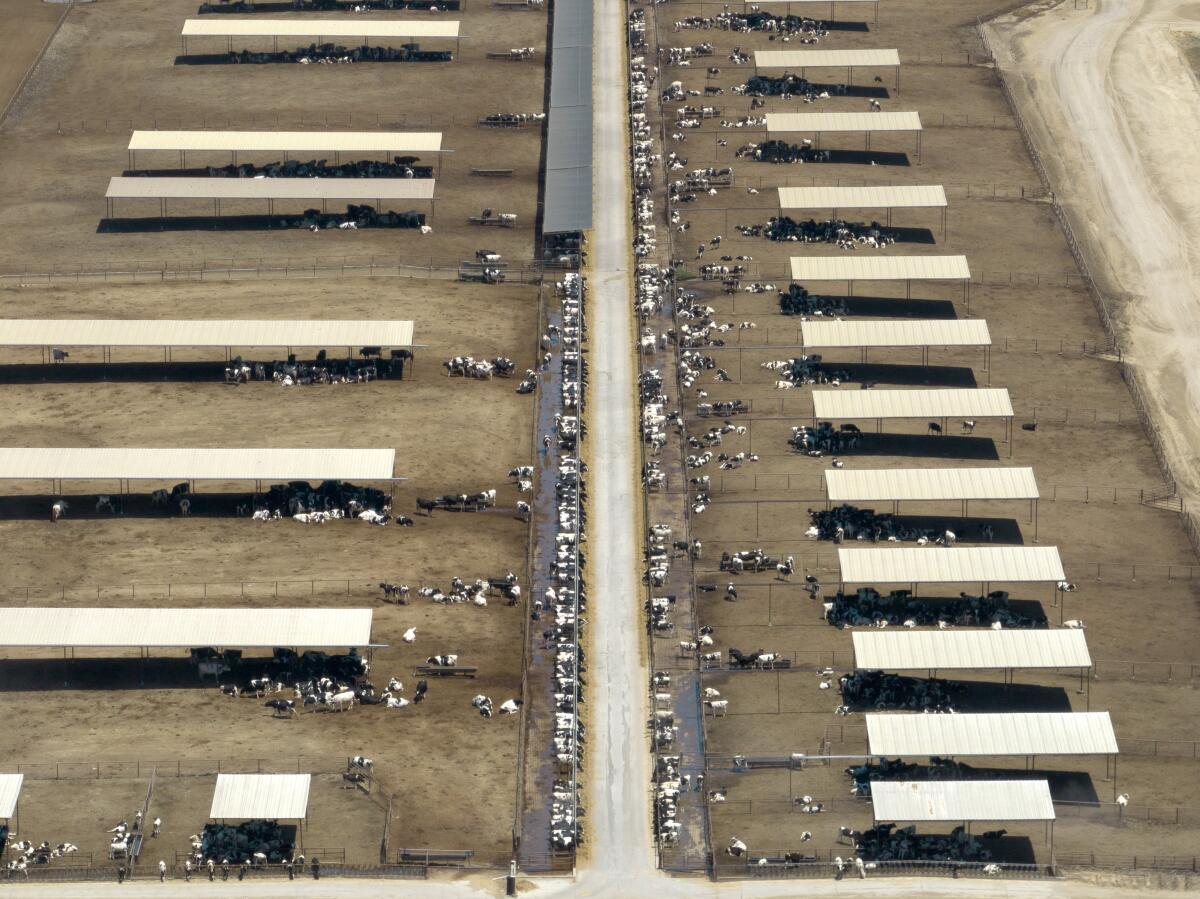
Around the turn of the 20th century, California’s herd size leapfrogged Wisconsin and New York, establishing the Golden State as the largest producer of milk, butter and ice cream.
California’s milk cow population has risen from 780,000 in 1950 to 1.7 million today. But perhaps of more consequence, the number of dairy farms has dropped from 19,000 to 1,100 during that time.
Small pasture-based dairy farms have virtually disappeared from the state as the dairy industry has consolidated herds at large feeding operations, raising serious questions about localized pollution.
One researcher I spoke to described the problem this way. It’s one thing to have a dog at every house on the block. It’s another thing to have all the dogs on the block at one house.
During my reporting, I visited a dairy in Bakersfield with nearly 14,000 cows. The herd, according to state reports, produced an estimated 250,000 tons of manure.
Sprinkler systems within barns activate and unglue the manure stuck to the barn floor. A torrent of chestnut-colored water rushes into sewer grates.
Pipelines carry this waste to a machine that separates out the solid dung into two-story-high piles. And signs next to open pools of wastewater warn about toxic emissions of hydrogen sulfide.
The trip offered me a glimpse of what’s not shown in ads that regularly appear on my TV. And it gave me more perspective on the environmental cost it takes to make the dairy products I buy at the local grocery store.
ONE MORE THING
Over the weekend, the U.S. Environmental Protection Agency announced new regulations to curtail methane leaks from oil and gas operations. The agency says the new rules aim to prevent an estimated 58 million tons of methane emissions by 2038, in addition to significant amounts of smog-forming chemicals known to seep out of extraction wells.
This column is the latest edition of Boiling Point, an email newsletter about climate change and the environment in California and the American West. You can sign up for Boiling Point here. And for more climate and environment news, follow @Sammy Roth on Twitter.
Toward a more sustainable California
Get Boiling Point, our newsletter exploring climate change, energy and the environment, and become part of the conversation — and the solution.
You may occasionally receive promotional content from the Los Angeles Times.
